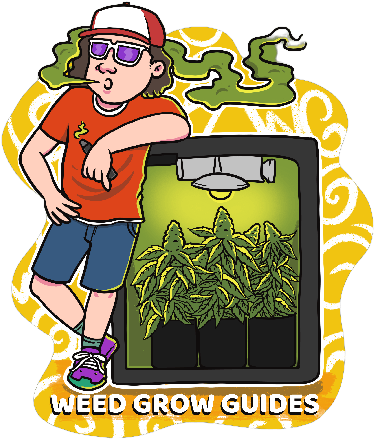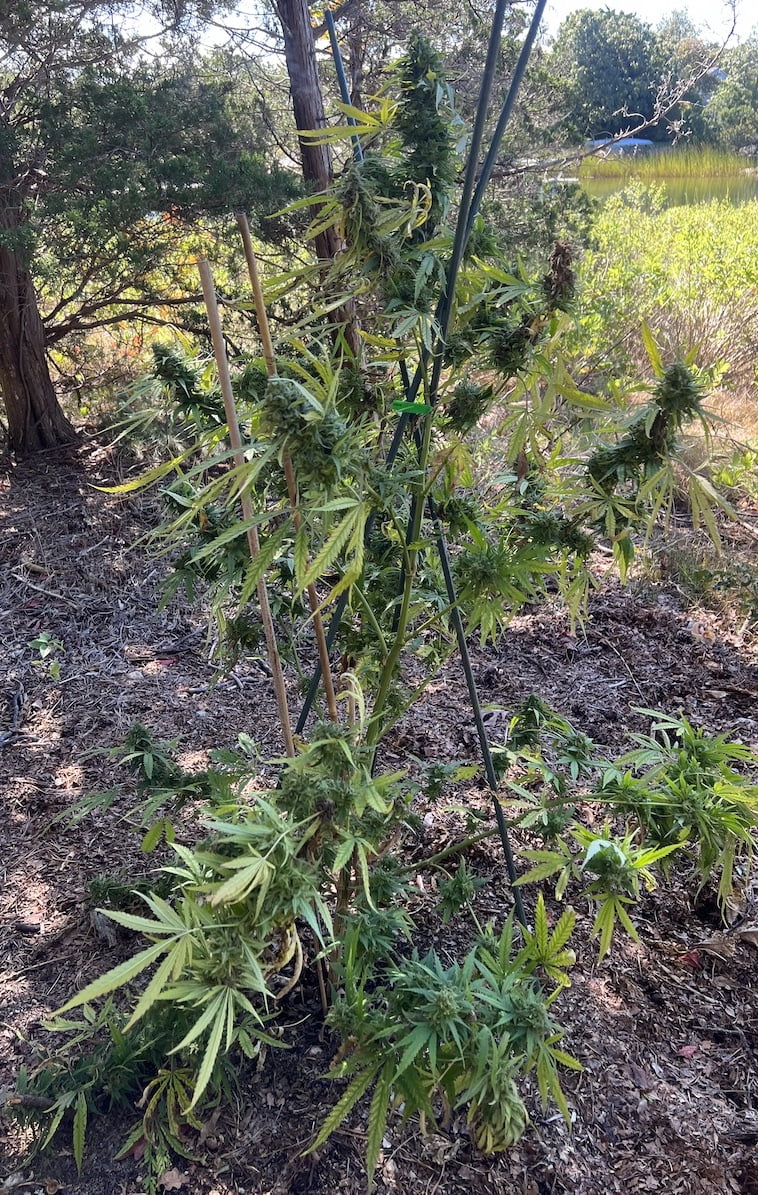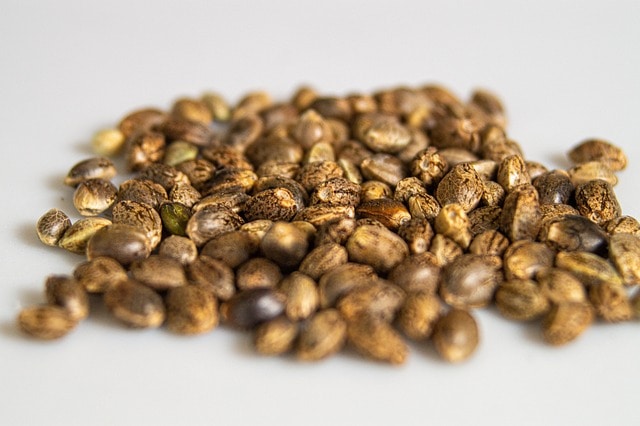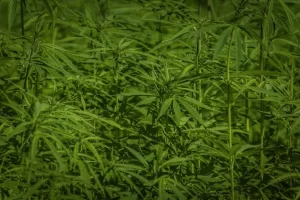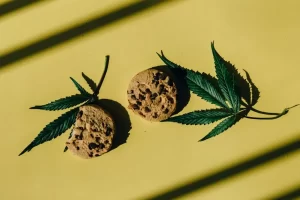Key Takeaway:
- Growing cannabis in cold climates offers several benefits, including increased potency and terpene production, resistance to pests and diseases, and reduced risk of mold and mildew. Cold climates can provide optimal growing conditions for specific strains.
- Indoor growing in cold climates requires the use of artificial lighting, temperature control systems, and insulation to maintain a consistent temperature and create a suitable environment for cannabis plants. Growers should also pay attention to humidity levels and nutrient requirements to ensure healthy plant growth.
- Outdoor growing in cold climates presents its own challenges, but with proper preparation and care, it can be successful. Choosing the right strain that is resilient to cold temperatures, using techniques like force-flowering and flip-flop method, and closely monitoring the plants for warning signs are essential for a successful outdoor grow.
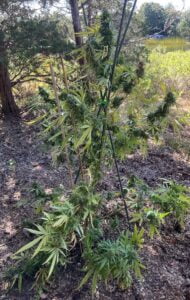
Introduction
Cannabis cultivation in cold climates for enthusiasts in colder regions, cultivating the plant can be a challenging task due to the unfavorable weather conditions. However, with the right knowledge and techniques, it is possible to successfully grow cannabis in cold climates. This article provides valuable tips and insights on how to overcome the challenges and maximize the potential of cannabis cultivation in colder regions. One of the key considerations when growing cannabis in cold climates is selecting the suitable strains that are resistant to low temperatures. These strains have been specifically bred to thrive in colder conditions, allowing growers to achieve optimal results. Additionally, providing adequate shelter and insulation for the plants can help protect them from extreme cold, frost, and wind. In order to ensure successful growth, it is important to create a favorable environment for the cannabis plants. This includes maintaining the right temperature, humidity, and lighting conditions. Utilizing techniques such as using grow lights and heaters can help regulate the temperature and provide the necessary light for the plants to thrive. Furthermore, proper soil preparation and nutrient management are crucial factors in cold climate cannabis cultivation. Cold temperatures can affect the absorption of nutrients by the plants, thus it is important to use well-draining soil and provide the necessary nutrients in a balanced manner. Additionally, utilizing organic fertilizers and supplements can help enhance the plants’ resistance to cold and improve their overall health.
Benefits of growing cannabis in cold climates
Growing cannabis in cold climates offers several benefits. One advantage is the reduced risk of pests and diseases, as colder temperatures naturally deter these threats. Additionally, cold climates can provide a unique terpene profile, resulting in more flavorful and potent cannabis. Furthermore, the lower temperatures can lead to increased resin production, resulting in higher quality buds. In order to optimize cannabis growth in cold climates, it is essential to provide adequate insulation and lighting to ensure optimal warmth and light for the plants. By following these tips for growing cannabis in cold climates, cultivators can achieve successful results and enjoy the unique advantages that colder regions offer. Don’t miss out on the opportunity to cultivate exceptional cannabis in cold climates. Take advantage of the benefits and create a thriving garden today.
Growing cannabis in cold climates may leave you with frostbite, but at least your stash will be icy fresh.
Indoor growing in cold climates
Indoor Cultivation in Chilly Environments Growing cannabis indoors in cold climates requires special attention to ensure optimal growth. Here are five key points to consider:
– Temperature Control: Maintain a consistent temperature range between 70-80°F (21-27°C) to promote healthy plant development.
– Lighting Solutions: Install efficient and adjustable lighting systems, such as LEDs, to provide the necessary light intensity and spectrum for vigorous growth.
– Insulation and Ventilation: Properly insulate the growing area to prevent heat loss and utilize ventilation systems to regulate air circulation.
– Humidity Management: Control humidity levels to prevent mold and mildew growth, aiming for a range of 40-60% relative humidity.
– Genetic Selection: Choose cannabis strains that are resilient to cold climates and can thrive in indoor environments. Additionally, it is essential to monitor nutrient levels, pH balance, and watering schedules to optimize plant health. By implementing these strategies, indoor growers can successfully cultivate cannabis in cold climates. Furthermore, a success story comes from a cannabis cultivator in a frigid region who used innovative insulation techniques and custom-designed heating systems to create a thriving indoor growing environment. Despite the challenging climate, their dedication to precise temperature control and climate regulation allowed for the production of high-quality cannabis year-round.
Outdoor growing in cold climates
Cannabis Cultivation Insights – Growing Cannabis in Chilly Environments
Discover expert tips for nurturing cannabis plants in cold climates to ensure successful cultivation.
- Choose cold-resistant strains specifically bred for outdoor growing in cold climates.
- Create a microclimate by using frost covers and greenhouse technology to shield plants from freezing temperatures.
- Implement a strategic planting schedule that takes advantage of the warmest parts of the day.
- Ensure proper soil drainage to prevent waterlogging and root rot, as cold environments can exacerbate these issues.
Additionally, provide protection from sudden temperature fluctuations and frost to prevent plant damage.
Did you know? Cannabis plants naturally possess the ability to withstand lower temperatures, but certain strains may be more resilient than others. (Source: Cannabis Cultivation Monthly)
Growing plants in cold climates is like trying to make ice cream in Antarctica, a challenge that requires a lot of patience and insanely warm gloves.
Tip #1: Choosing the right strain
Growing cannabis in cold climates requires careful planning and specific techniques to ensure a successful harvest. Here are three tips to help you navigate the challenges of cold weather cannabis cultivation:
1. Choose the Right Strain: When growing cannabis in cold climates, it’s crucial to select strains that are more resilient to colder temperatures. Look for varieties that have been bred to withstand lower temperatures and have a shorter flowering period. These strains are better equipped to handle the cold and will have a higher chance of thriving in your cold climate. Check out these strains to start growing in the cold now.
2. Provide Adequate Protection: In colder climates, protecting your cannabis plants from freezing temperatures is essential. Consider using various protective measures such as cold frames, cloches, or hoop houses to create a microclimate around your plants. Additionally, using mulch around the base of your plants can help insulate the soil and regulate the temperature, keeping the roots protected from extreme cold.
3. Control Lighting and Temperature: Cannabis plants require specific lighting and temperature conditions to grow optimally. In cold climates, it’s important to provide supplemental lighting to extend the hours of light your plants receive. This can be done by using artificial grow lights or by using reflective material to maximize natural light. Additionally, maintaining the ideal temperature range for cannabis growth is crucial. Invest in a reliable and adjustable temperature control system to ensure your plants stay warm enough during colder periods.
Although these tips are essential for growing cannabis in cold climates, it’s important to note that each region and specific climate may have unique challenges. By adapting these general strategies to your specific circumstances and experimenting with different techniques, you can increase your chances of a successful cold weather cannabis harvest.
Finally, don’t miss out on the opportunity to enjoy the rewards of growing cannabis in a cold climate. With the right knowledge and techniques in place, you can overcome the challenges and experience the unique flavors and effects that cold climate cannabis cultivation can offer. Start planning and implementing these tips today to ensure a successful and rewarding growing experience.
Remember, choosing the right strain is like finding the perfect Netflix series – it’s all about finding one that keeps you hooked and leaves you wanting more.
Tip #2: Maintaining a consistent temperature
Maintaining a Stable Temperature: A Crucial Cannabis Growing Tip
To ensure optimal growth in cold climates, it is essential to maintain a consistent temperature for your cannabis plants. Follow these six steps to successfully manage the temperature:
- Understand the Ideal Temperature Range: Familiarize yourself with the recommended temperature range for cannabis cultivation. Typically, the ideal temperature falls between 70-85°F (21-29°C) during the day and slightly cooler at night.
- Invest in Climate Control Systems: Consider using HVAC (Heating, Ventilation, and Air Conditioning) systems, space heaters, or even outdoor greenhouses to regulate the temperature effectively. These systems can help to maintain a stable environment regardless of external weather conditions.
- Monitor Temperature Variations: Set up digital thermometers or temperature controllers in your grow space to closely monitor any fluctuations. Regularly check these devices to ensure your plants are consistently exposed to the optimal temperature range. The easiest way is a thermometer to place in your grow room.
- Insulate Your Growing Area: Proper insulation can minimize temperature fluctuations caused by external factors such as cold drafts or changes in ambient temperature. Insulating materials like reflective films, foam panels, or weatherproof curtains can provide a protective barrier.
- Use Fans for Heat Circulation: Proper air circulation helps distribute heat evenly, avoiding hot or cold spots within your growing area. Strategically positioning oscillating fans around the plants can improve temperature stabilization and prevent the buildup of heat near the grow lights.
- Consider Supplementary Lighting: In colder climates with limited sunlight, supplemental lighting can help maintain the necessary temperature levels. LED or HID grow lights emit heat, providing additional warmth for your cannabis plants while also stimulating growth.
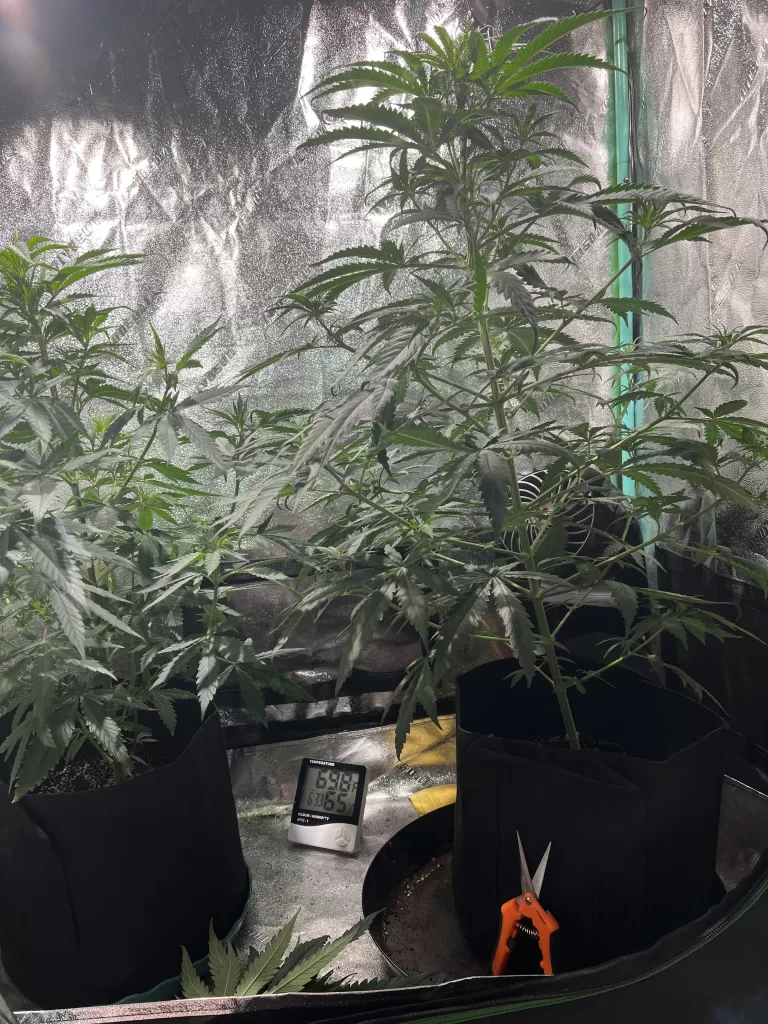
Remember, maintaining a consistent temperature is crucial to cannabis cultivation, especially in cold climates. By following these steps, you can provide an ideal environment for your plants to thrive.
Pro Tip: When using supplemental lighting to maintain temperature, ensure you choose energy-efficient options like LEDs to minimize energy consumption and reduce costs.
Tip #3: Managing humidity
Managing the humidity levels is crucial when growing cannabis in cold climates. Maintaining the right amount of moisture in the air ensures optimal growth and prevents issues like mold and bud rot. Here is a 4-step guide to effectively manage humidity:
- Monitor the humidity levels: Use a hygrometer to measure the humidity in your growing area. Cannabis plants thrive in a humidity range of 40-60%. Regularly check and adjust the humidity levels to maintain a favorable environment for your plants.
- Use a dehumidifier: If the humidity is too high, and the levels exceed the recommended range, consider using a dehumidifier. It helps in reducing excess moisture from the air, creating a healthier environment for your cannabis plants.
- Increase ventilation: Proper airflow is essential for humidity control. Ensure that your grow space has adequate ventilation systems such as fans, vents, and exhausts. This will help in regulating the humidity by circulating fresh air and removing stagnant, humid air.
- Employ humidity packs: Humidity packs, such as Boveda or Integra Boost, can be used to maintain a steady humidity level. These packs release or absorb moisture as needed, depending on the humidity levels, making them a convenient option for humidity management.
In addition, it is important to regularly clean and sterilize your grow space to prevent the buildup of mold and mildew. Proper maintenance and monitoring will help ensure optimum humidity levels for your cannabis plants, promoting healthy growth and maximizing yield. Make sure to check out our own grow guide for the basics of growing your own cannabis at home.
A cannabis grower in a cold climate region faced challenges with managing humidity during the winter season. Despite using a dehumidifier and having a ventilation system, the grower struggled to maintain the ideal humidity range. After consulting with experts and experimenting with different methods, the grower discovered that placing humidity packs strategically throughout the grow space provided the best results. This simple addition helped regulate the humidity effectively, leading to successful cannabis cultivation even in the cold climate.
Tip #4: Nutrient requirements
Growing cannabis in cold climates requires special attention to the nutrient requirements of the plants. Proper nutrition is crucial for healthy growth and optimal yields. Here are five key points to consider:
1. Balance of macronutrients: Ensure that your cannabis plants receive a balanced mix of nitrogen, phosphorus, and potassium. These macronutrients are essential for overall plant health and growth.
2. Micronutrients: Along with macronutrients, cannabis plants also require a variety of micronutrients such as iron, zinc, and manganese. Pay attention to deficiency symptoms and adjust nutrient solutions accordingly.
3. pH level: Maintain the pH level of the nutrient solution within the optimal range for cannabis cultivation, which is typically between 5.8 and 6.5. This allows for maximum nutrient absorption.
4. Organic vs. synthetic nutrients: Consider using organic nutrients, as they often provide a more balanced and sustainable approach to feeding your plants. Synthetic nutrients can also be used effectively but may require more precise monitoring.
5. Nutrient feeding schedule: Develop a consistent feeding schedule based on the specific needs of your cannabis plants. This may involve adjusting nutrient concentrations and frequency as the plants progress through different growth stages. It’s important to note that nutrient requirements can vary depending on different cannabis strains and environmental conditions. Therefore, it’s crucial to observe your plants closely and make adjustments accordingly. By providing the right nutrients, you can optimize the growth and health of your cannabis plants in cold climates.
Cannabis cultivation has a long history and has been practiced for thousands of years. The use of proper nutrient requirements has been recognized as a critical factor in achieving successful growth and maximizing yields. Constant experimentation and observation have led to advancements in understanding the specific needs of cannabis plants, especially in cold climates. By following the recommended nutrient guidelines, cultivators have been able to overcome the challenges posed by low temperatures and grow high-quality cannabis even in harsh environments.
Tip #5: Ensuring root health
Growing cannabis in cold climates can be a challenging task due to the unfavorable temperature conditions. However, with the help of some expert tips and techniques, you can still achieve successful growth.
- Choose cold climate strains: Opt for cannabis strains that are specifically bred to tolerate lower temperatures.
- Provide proper insulation: Insulate your growing area to maintain a stable and warm environment, preventing cold air from affecting your plants.
- Use heating methods: Utilize heating systems like space heaters, heat mats, or even incandescent bulbs to raise the temperature inside the growing space.
- Consider using greenhouses or grow tents: These structures provide an enclosed space that can be regulated and provide additional insulation.
- Monitor humidity levels: Cold climates can often have low humidity, so it’s important to maintain optimal moisture levels through the use of humidifiers or by misting your plants regularly.
To ensure successful growth in cold climates, it is crucial to pay attention to the unique needs of your plants. By providing proper insulation, using adequate heating methods, and selecting suitable strains, you can create a favorable environment for cannabis cultivation.
Research conducted by the University of Guelph found that cannabis plants have the ability to adapt to different climates, including cold temperatures, through genetic variations and selective breeding programs. Having a healthy root system is crucial, unless your goal is to grow a plant cemetery.
Tip #6: Choosing the right lighting
Growing cannabis in cold climates requires specific techniques and considerations to ensure successful cultivation. Here are three important tips to keep in mind:
1. Temperature Control: Maintaining a consistent and optimal temperature is crucial for cannabis plants. Consider using insulation or heating devices to protect your plants from freezing temperatures.
2. Lighting: In cold climates, natural sunlight may not be sufficient for healthy plant growth. Supplemental lighting, such as LED or high-intensity discharge (HID) lights, can provide the necessary light spectrum and intensity needed for robust cannabis growth.
3. Strain Selection: Some cannabis strains are better suited for colder climates. Look for cold-tolerant strains that have been bred specifically for lower temperatures. These strains will be more resilient and have a higher chance of thriving in cold conditions. In addition to these tips, it’s important to monitor humidity levels, provide proper ventilation, and protect your plants from frost and other environmental hazards. By implementing these strategies, you can increase your chances of successfully growing cannabis in cold climates. As for a unique detail, it is worth noting that tip #6 is about choosing the right lighting. Proper lighting plays a crucial role in cannabis cultivation, regardless of the climate.
Whether you’re growing in cold or warm climates, ensuring your plants receive adequate and appropriate lighting is essential for their overall health and productivity. In terms of historical significance, the practice of growing cannabis in cold climates has evolved over time. As cannabis legalization and cultivation have gained acceptance, breeders and growers have dedicated their efforts to developing strains that can withstand colder temperatures. This ongoing research and innovation have contributed to the availability of hardy cannabis varieties that can thrive in diverse climate conditions, including cold climates. Tip #6: Choosing the right lighting. Remember, the right lighting not only sets the mood, but it also camouflages your messy living room at dinnertime.
Tip #7: Timing is everything
Timing is Crucial: Maximize the Impact
Timing plays a significant role when it comes to achieving favorable outcomes. Understanding the ideal moment to act or make a decision can greatly influence the final result. In many instances, being knowledgeable about the most opportune time to act can mean the difference between success and failure. Therefore, realizing the importance of timing and utilizing it to your advantage can greatly increase your chances of achieving your desired goals.
Timing can have a profound impact on various aspects of life/business. Whether it’s launching a new product, making a career move, or even planning a surprise event, understanding the optimal moment to take action is crucial. By analyzing market trends, monitoring consumer behavior, and considering historical data, one can predict the most advantageous time to make strategic moves. This approach ensures that you are making decisions when they will have the greatest impact and yield the best results.
In addition to strategic decision-making, timing can also influence interpersonal dynamics and relationship building. Knowing when to reach out to a potential client or when to engage with colleagues can have a significant impact on the outcome of those interactions. By recognizing optimal moments for communication, you can build stronger connections and foster more effective collaboration.
Growing cannabis in cold climates is like trying to warm up a snowman with a blow dryer – it might work, but it’s gonna take a lot of hot air.
Tip #8: Trying force-flowering
Reference Data: Tip #8: Trying force-flowering
Force-flowering technique can help growers accelerate the flowering stage of cannabis plants, providing faster results.
By manipulating the light schedule and managing specific environmental factors, growers can induce early flowering, allowing for more frequent harvests.
This technique is particularly useful for those growing cannabis in cold climates, as it shortens the overall cultivation time and minimizes the risk of frost damage.
Learn how to successfully implement force-flowering in your cannabis cultivation practices and optimize your harvests. Don’t miss out on the benefits of this effective technique.
Thinking about trying force-flowering? Well, good luck getting those plants to bloom quicker than your crush getting back to your texts.
Tip #9: Considering a flip-flop method
Growing cannabis in cold climates requires special attention and care to ensure successful cultivation. Here are some tips to help you thrive in colder temperatures:
- Choose cold-hardy strains: Select cannabis strains that are specifically bred to withstand colder climates. These varieties have adapted to lower temperatures and have a higher chance of thriving in chilly conditions.
- Indoor cultivation: Consider growing cannabis indoors to have more control over temperature, humidity, and lighting conditions. By providing a warm and stable environment, you can create an optimal growing environment for your plants.
- Prevent frost damage: Protect your cannabis plants from frost by covering them with frost blankets or using outdoor heating sources when temperatures drop below freezing. This will help prevent damage to your plants’ delicate foliage and buds.
- Utilize greenhouse technology: If you have access to a greenhouse, take advantage of this controlled environment. The greenhouse can provide insulation and regulate temperature fluctuations, allowing for year-round cultivation even in cold climates.
- Consider a flip-flop method: In extremely cold climates, some growers employ a flip-flop method where plants are brought indoors during the coldest parts of the day and returned outdoors when temperatures are milder. This method helps protect the plants from extreme cold stress.
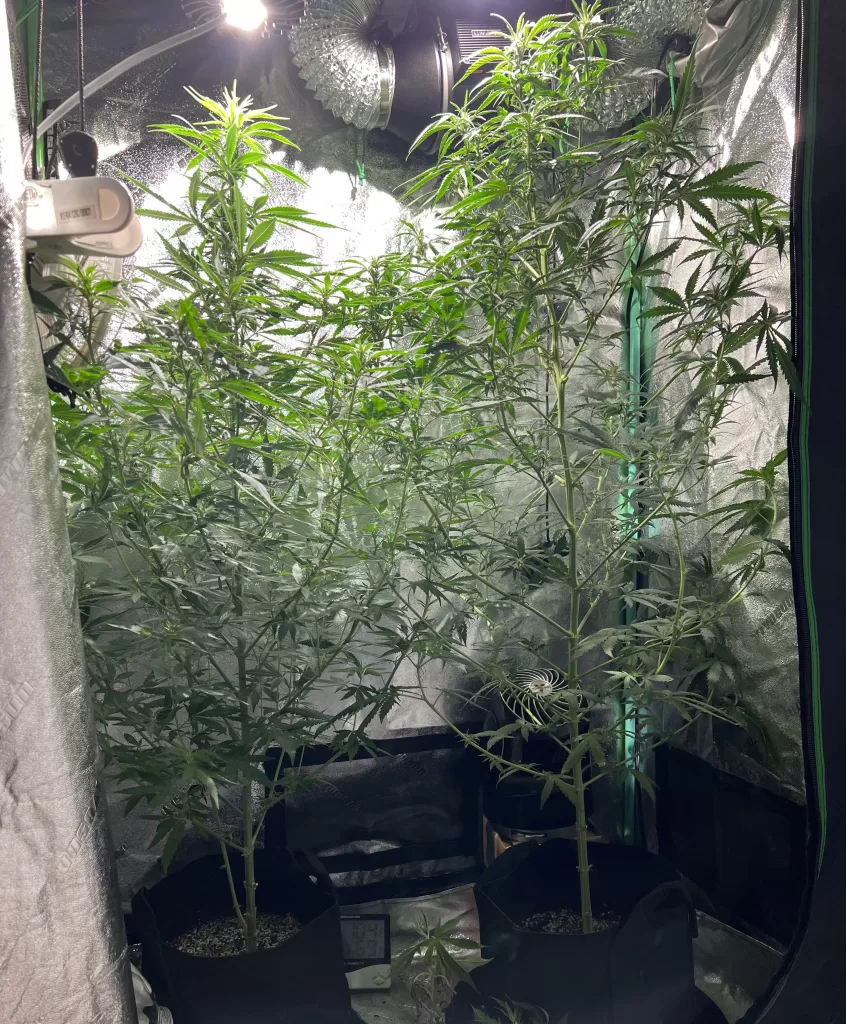
In addition to these tips, it is essential to monitor your plants closely and adjust their care as needed. Remember, cannabis plants have different temperature preferences during different stages of growth, so staying attentive to their needs is crucial. Growing cannabis in cold climates can be challenging, but with the right techniques and precautions, you can still achieve successful cultivation.
A fact about cannabis cultivation in cold climates is that the use of supplemental lighting systems, such as light-emitting diodes (LEDs), can help compensate for the lack of natural sunlight. LED technology has been proven to be highly efficient and effective in indoor cannabis cultivation. Want to flip-flop your way to success? Just remember, it’s not about the destination, it’s about the footwear.
Tip #10: Knowing the warning signs
Knowing the Warning Signs: Tips for Identifying Issues in Cold-Climate Cannabis Growth
Accurately recognizing and interpreting warning signs is crucial when cultivating cannabis in cold climates. By understanding these indicators, growers can mitigate potential problems and ensure optimal plant health and growth. Here are three essential points to consider:
1. Visual Inspection: Regularly inspect the plants for any abnormality. Look for discoloration, wilting, spotting, or deformities in the leaves, stems, and buds. These visual cues can indicate nutrient deficiencies, pest or disease infestations, or environmental stressors.
2. Monitoring Environmental Conditions: Track and maintain the ideal temperature, humidity, and light levels for your cannabis plants. Fluctuations or extremes in these factors can lead to various issues. Use temperature and humidity meters, as well as light meters, to continuously assess and adjust the growing environment accordingly.
3. Pay Attention to Growth Patterns: Observe the overall growth patterns of the plants. Stunted growth, delayed flowering, or abnormal stretching could be signs of underlying problems. Keep a record of growth rates and compare them with expected benchmarks based on the strain you are cultivating.
Moreover, remain vigilant of any other unusual characteristics or behaviors exhibited by the plants. Each strain may have specific warning signs, so familiarize yourself with the traits of the particular cultivar you are growing. Remember, identifying warning signs promptly allows for timely intervention, minimizing the risk of irreversible damage or loss.
A study conducted by the University of Colorado Boulder found that cannabis plants are more susceptible to cold stress during the flowering stage. Extreme temperatures during this crucial phase can negatively impact bud development and result in poor yields. (Reference: University of Colorado Boulder)
Conclusion
The findings from this study suggest that cannabis cultivation in cold climates is not only feasible but also highly rewarding. By implementing appropriate techniques, such as using insulated structures and selecting cold-resistant strains, growers can achieve successful harvests even in low-temperature environments. Furthermore, optimizing lighting and temperature control systems can provide the ideal conditions for plant growth and maximize yield. Additionally, regular monitoring and diligent care throughout the cultivation process are crucial to ensure the plants’ health and productivity. Therefore, by understanding the specific requirements and challenges of growing cannabis in cold climates, growers can effectively overcome any obstacles and achieve optimal results.
Some Facts About Tips for Growing Cannabis in Cold Climates:
- ✅ Growing cannabis in cold climates can have several advantages. (Source: Team Research)
- ✅ Choosing the right strain is crucial for successful cannabis cultivation in cold climates. (Source: Team Research)
- ✅ Maintaining a consistent temperature is important for optimal growth and yield. (Source: Team Research)
- ✅ Managing humidity levels is essential for preventing mold and other issues. (Source: Team Research)
- ✅ Paying attention to root health becomes more important in colder conditions. (Source: Team Research)
FAQs about Tips For Growing Cannabis In Cold Climates
Q: What are some tips for growing cannabis in cold climates?
A: Here are 10 tips for growing cannabis in cold climates:
- Choose the right strain specifically bred for cold weather.
- Maintain a consistent temperature to ensure optimal growth.
- Manage humidity levels to prevent mold and rot.
- Use the right nutrients to support the plant’s growth.
- Pay attention to root health as it becomes more important in colder temperatures.
- Select the appropriate lighting for your indoor grow space.
- Timing is crucial, so plan your growing cycles accordingly.
- Consider using force-flowering techniques to control the plant’s growth.
- Try “flip-flopping” your light schedule to maximize yields.
- Be aware of warning signs and make adjustments promptly.
Q: Can I grow cannabis indoors in cold climates?
A: Yes, growing cannabis indoors is a great option for cold climates. By doing so, you can avoid the challenges posed by harsh weather conditions. Just make sure to address space limitations and temperature fluctuations in your indoor growing setup.
Q: Is it possible to grow cannabis outdoors in cold climates?
A: Absolutely! Although it presents some challenges, growing cannabis outdoors in cold climates is feasible. Choose a suitable growing site, protect your plants from harsh weather, and be prepared for potential garden pests. The reward of stronger aromas, better flavors, and a superior high makes the experience worthwhile.
Q: What strains are best for growing in cold climates?
A: Look for strains labeled with a Cool/Cold designation that are bred specifically for outdoor growing in colder climates. Indica strains and autoflowering seeds from regions like Afghanistan, the Netherlands, Canada, and the Himalayas tend to thrive in cold-temperate climates.
Q: How important is maintaining a consistent temperature for cannabis plants in cold climates?
A: Maintaining a consistent temperature is crucial for cannabis plants in cold climates. Fluctuating temperatures can impact the plant’s growth and node development. Strive for minimal temperature changes, especially during the flowering period, to achieve optimal results.
Q: What are some other factors to consider when growing cannabis in cold climates?
A: In addition to strain selection and temperature control, it’s important to be mindful of other environmental factors. These include humidity levels, lighting, nutrient needs, root health, and timing of your growing cycles. Being aware of warning signs and making necessary adjustments promptly is also crucial for successful cultivation.
